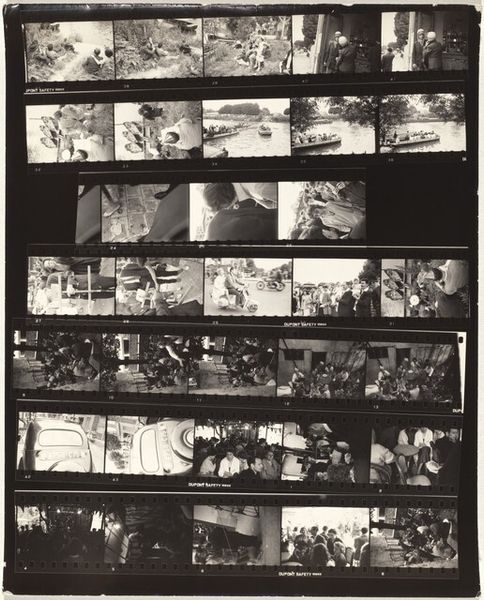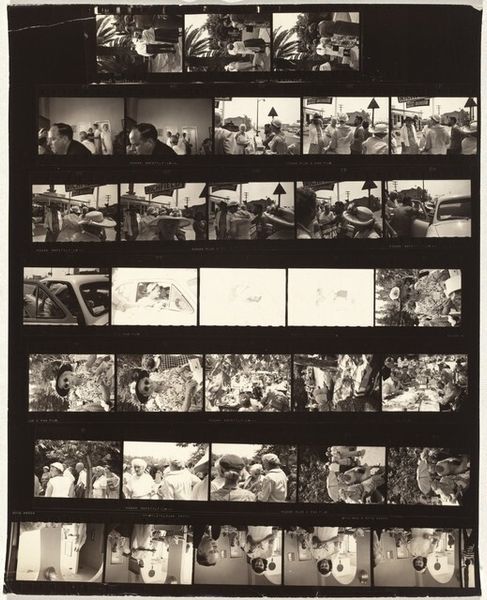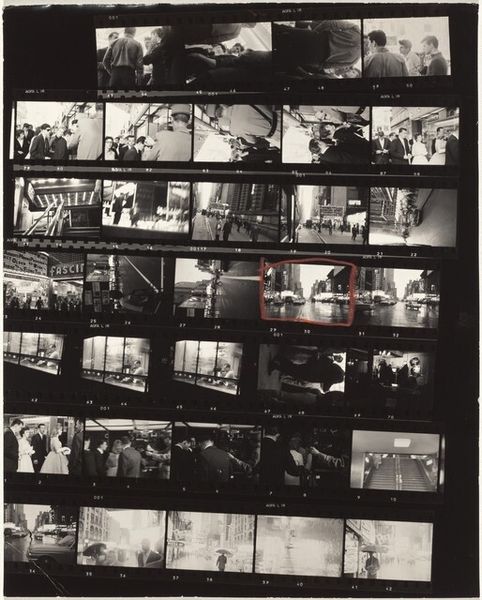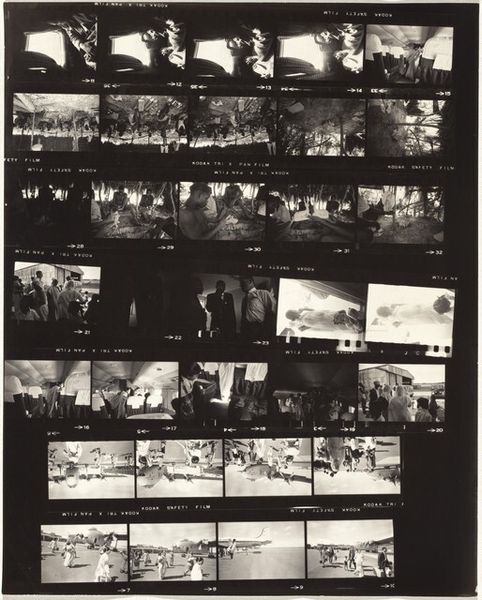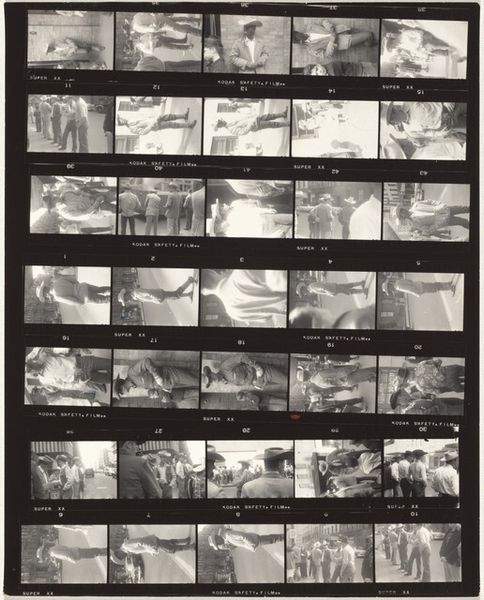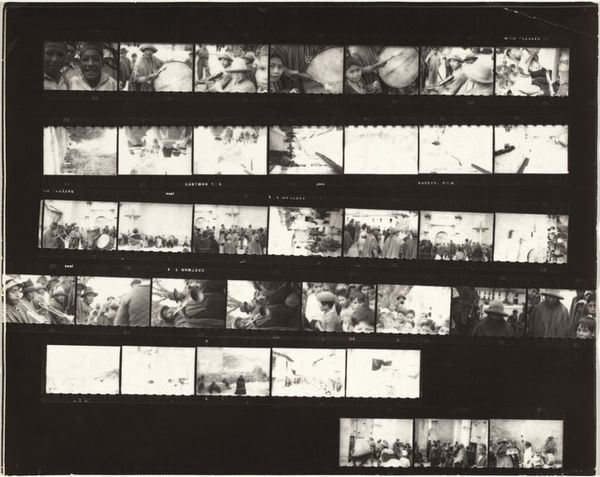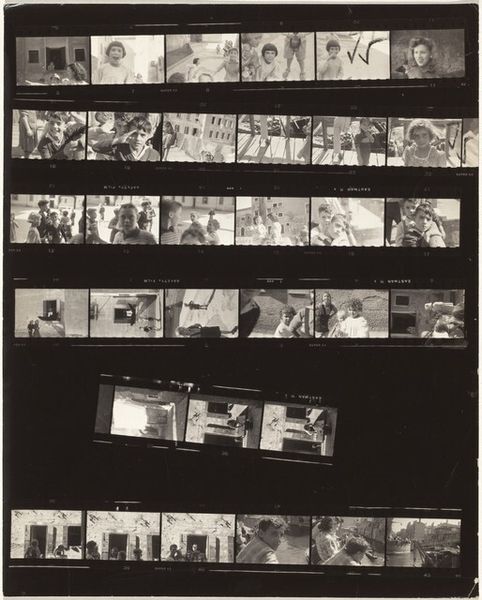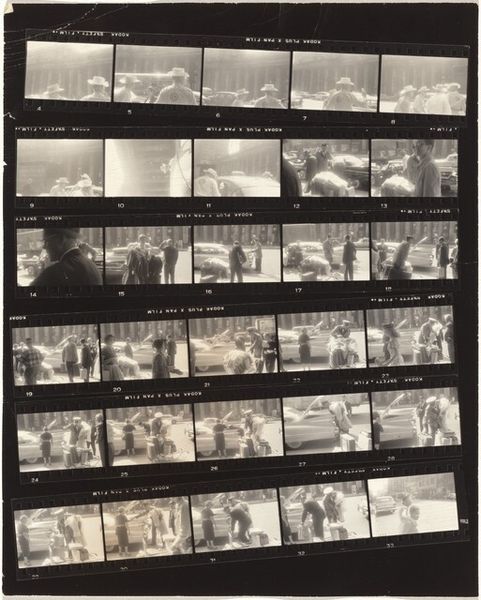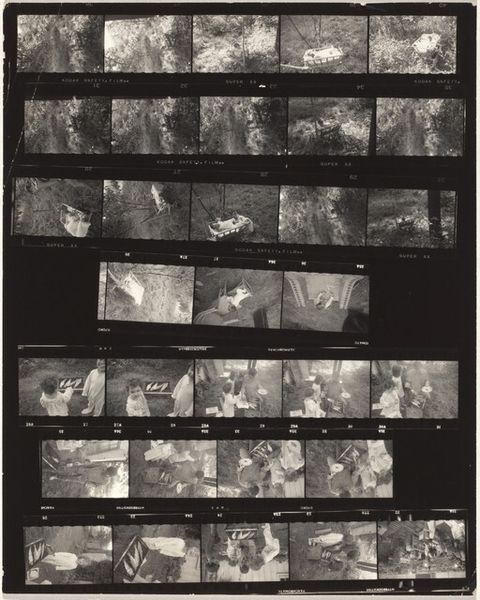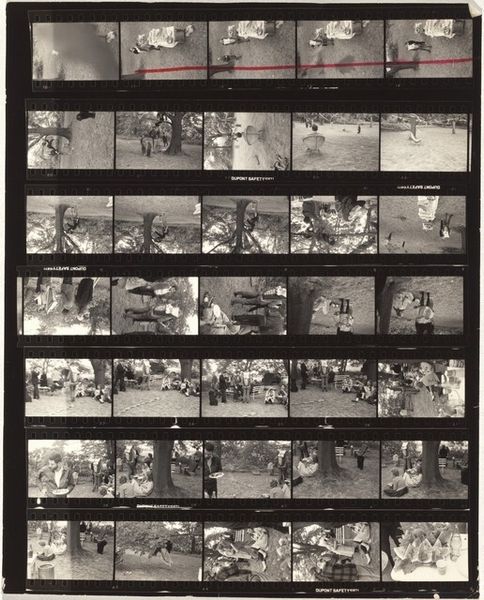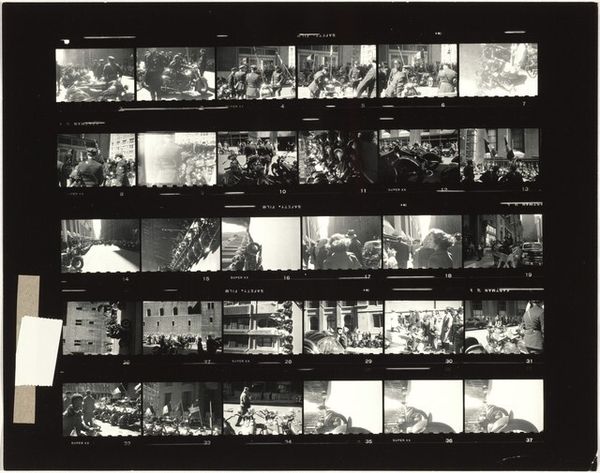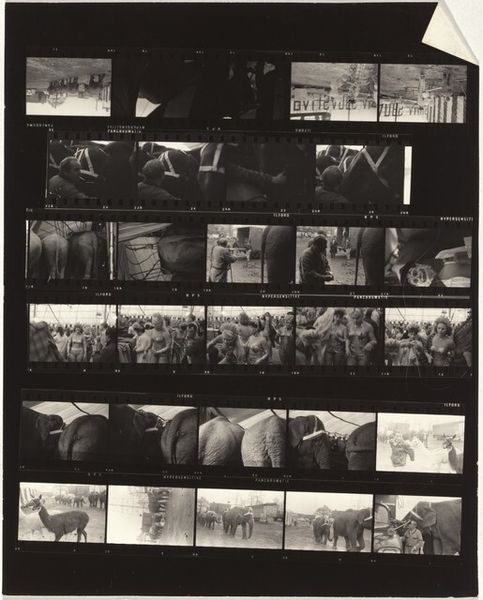
photography, gelatin-silver-print
#
portrait
#
street-photography
#
photography
#
gelatin-silver-print
#
monochrome photography
#
realism
Dimensions: overall: 25.2 x 20.2 cm (9 15/16 x 7 15/16 in.)
Copyright: National Gallery of Art: CC0 1.0
Curator: Before us, we have "Nixon campaign 6" by Robert Frank, taken in 1960, presented as a gelatin silver print. What are your immediate thoughts on this piece? Editor: Chaotic, wouldn't you say? The grid of images jostles the eye. I get a sense of frantic energy, not necessarily from the depicted scenes themselves but more so in how they’re compiled. Curator: Precisely! Frank's work frequently challenges conventional notions of photographic order. The contact sheet format removes any idealized final image; instead, we have raw visual information laid bare. Semiotically speaking, consider the arrangement of each frame. Do they coalesce into a cohesive narrative, or disrupt one? Editor: I see the narrative disrupting. As I peer at the rows and columns of frames, I find a certain documentary truth that exposes the very staged nature of the political campaign. Nixon’s image repeats. We see his engagement with different crowds. Flags are positioned strategically, but I get a sense of a performance, which is made only more transparent by the format in which these pictures are presented. Curator: Note the tonality of this gelatin silver print as well; Frank’s utilization of contrast evokes a feeling of tension and rawness. The blacks are very deep and rich in many of the pictures. Also, there is a limited amount of grays, highlighting his critical gaze during the Eisenhower years. Editor: The selection, and almost rejection, is telling. The arrangement lacks heroic iconography or straightforward sentimentality we’d find in, say, official campaign materials. It hints at anxieties beneath the surface, and by revealing this contact sheet to the public Frank unveils what it is to promote political leaders, while questioning how imagery shapes public opinion and participation. Curator: I find myself reconsidering Frank's position in photographic discourse through the presentation here, and appreciate you helping reveal such potential. Editor: Absolutely. It's in these visual arguments, so well communicated by composition and form, that Frank's critical vision achieves clarity and impact.
Comments
No comments
Be the first to comment and join the conversation on the ultimate creative platform.
